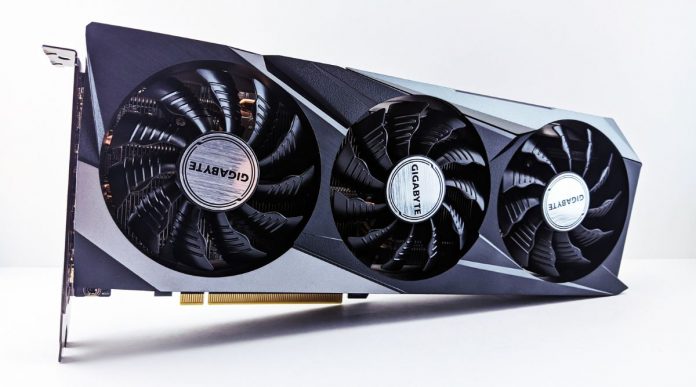When you’re looking to purchase new computer components, it’s tempting to prioritize your graphics card first, since gaming, graphic design, and other similar tasks rely heavily on the performance of this single component. To make sure you’re getting the best possible graphics card for your money, though, you need to test it before you make your purchase – but how can you do that when the store doesn’t let you bring in your own monitor? This guide will show you how to test your graphics card with your monitor so that you can make sure the card works before deciding whether or not to buy it.
Have you ever wondered whether your graphics card can handle the newest video game? Today I’m going to show you how to test your graphics card, step by step, so that you never have to wonder again! It’s easier than you think, so let’s get started.
At First, inspect the hardware
*Inspect the hardware:* inspect the exterior of the graphics card (the part that plugs into your computer). For example, is there any dust on it? Any dirt? Are all connections firmly seated in their slot? If you’re not sure about something, Google it. For instance, if there’s some stray copper colored flecks on a heatsink fin, does that mean anything to you?
Next inspect the software settings. For example, what version of DirectX is your graphics card running at? This information can be found in either Programs and Features in Windows or System Settings -> Software and Updates -> Additional Drivers.
What’s happening under the hood may need a little more scrutiny than just looking at these two things.
Confirm that the cooling fan(s) is in good condition
Checking your GPU’s fan is a quick way to know if your graphics card is malfunctioning or just needs a cleaning. Dirt and dust can obstruct the ventilation, leading to overheating which can lead to serious damage. The following steps detail how to test and troubleshoot the cooling fan:
1) Remove any peripherals from your computer’s motherboard which may be in the way of accessing or opening up your graphics card (e.g., keyboard, mouse, and cover panels).
2) Locate the proper tab(s) that correspond with removing the casing over your graphics card’s fan(s). These tabs will usually be located along the sides of a graphics card and will need some force to pry apart. Once removed, you should see two small screws on either side of the metal housing around the fans. Unscrew these two screws to fully remove the metal housing. There are many variations of this process but they all include removing the metal housing and unscrewing two screws that are on either side of it. Once you have done this, you should see four wires connected to both ends of each fan.
Things to keep in mind when testing your GPU
Keeping a few points in mind will make your graphics card testing more fruitful. One is to make sure you are using the right software and drivers, which usually come with GPU manufacturers’ bundled software. Secondly, keep an eye on the power level of your GPU; some GPUs can handle overclocking better than others, so if you’re going to use your GPU to test performance while it’s overclocked, be sure to find out whether or not it can do that. Finally, keep an eye on your CPU load as well. A lot of time the bottleneck for a video card is not its capability but the processing power of other parts in the system.
Run a benchmark test and take screenshots
Benchmark tests will determine how well your computer performs, and will let you know whether or not you need to upgrade. Benchmark tests are quick, with some taking just a few minutes to complete. We’ll explain how to run one from Intel’s Choose Which GPU page. Select Tool then Software, and in the search bar type in 3DMark or Cinebench depending on which one you want to run (or see below for benchmark commands). These benchmark tests can take anywhere from five minutes to thirty minutes depending on your system configuration. When you’re done running a test, press stop. Then, scroll down the page and click on the screenshots tab to capture screenshots of your system from before and after running the test.
Run another benchmark test on different settings
Next, we recommend you benchmark your graphics card and see how it performs in different settings. If you’re going to be doing 3D or high-end games, you’ll want to make sure that the resolution is set at a 1080p resolution or higher and have the settings on Ultra. If not, it can save on battery life for lower resolutions and less demanding textures. Note: The benchmark test does take about 20 minutes to run if set at maximum graphics settings.
Compare scores online
As you’re scrolling through your computer, you notice that your graphics card is showing less than 60 frames per second. The game you were playing stutters as the frame rate drops below 30 frames per second. This can lead to glitches and lagging and cause a negative experience in-game. Knowing what frame rate is optimal for certain games will help you optimize your system for an enjoyable experience and finding out if your graphics card has lower frame rates may help guide which hardware purchase is needed to improve the graphics.
A quick google search shows that League of Legends runs smoothly at 90+ fps, which means the game feels fluid instead of choppy, while World of Warcraft has a baseline 40 fps with a cap of 60 fps.
Conclusion
Now that you know how to test your graphics card, it’s time to see if you have a faulty graphics card. You’ll need to boot into safe mode and run the diagnostic on your computer. Safe mode will disable any programs that are causing the problem and help you get an accurate reading of what is going on with your graphics card. Once you find out what is wrong with it, simply replace it with a new one and your good as new!
You might need to replace it with a model that suits your needs better if the game can’t run on any settings higher than low (meaning it doesn’t take advantage of the processing power). What you do depends on your situation and what type of game you want to play.

